Struggling to hold onto muscle while fasting? You’re not alone.
Many lifters and athletes using intermittent fasting fear losing strength, energy, or even their hard-earned muscle gains.
That’s where EAAs (Essential Amino Acids) come in.
These powerful building blocks may just be the missing link between effective fat loss and muscle retention during your fasting window.
But do EAAs break a fast—or do they enhance it?
In this article, I’ll break it all down from real-world coaching experience and science-backed facts so you can decide if EAAs are worth adding to your intermittent fasting routine.
Table of contents
Quick Answer: Do EAAs Break a Fast or Help It?
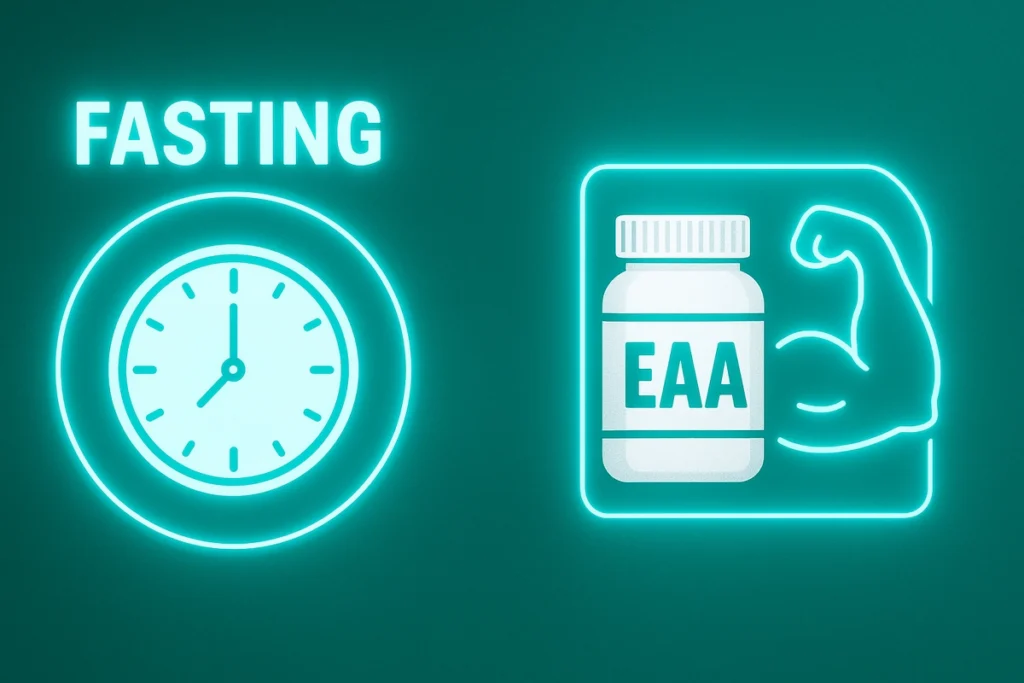
No, EAAs (Essential Amino Acids) don’t break your fast—and yes, they can actually help you get more out of it.
Whether you’re fasting for fat loss or longevity, EAAs provide muscle-protecting benefits without significantly affecting insulin or calorie load.
From my experience as a fitness coach, I’ve used EAAs during fasting phases, especially when aiming to retain muscle while cutting.
They’ve helped me and my clients train harder, recover faster, and hold onto muscle mass—all while staying in a fasted state.
For a detailed comparison between EAAs, BCAAs, and protein powder, check out this comprehensive guide.
What Are EAAs and Why Are They Important?
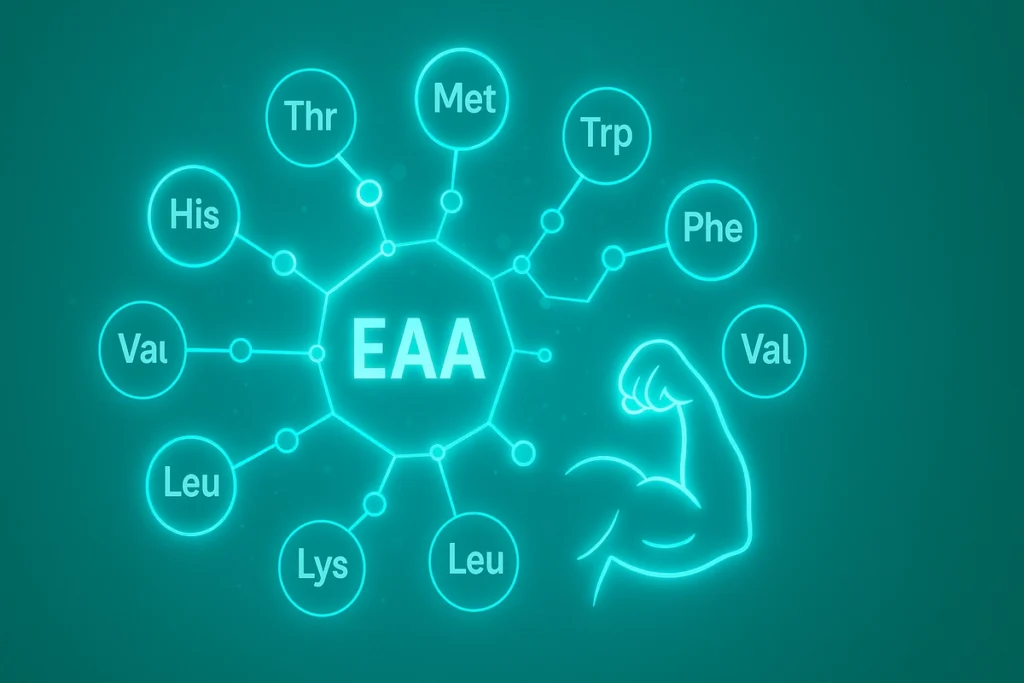
EAAs are the nine essential amino acids your body can’t produce on its own.
They’re crucial for muscle protein synthesis, especially when you’re not eating for extended periods.
During intermittent fasting, your body may start breaking down muscle tissue for amino acids.
Supplementing with EAAs gives your body what it needs—without triggering a full-blown metabolic response that breaks your fast.
Want to know the ideal dosage for lifters? Here’s a helpful breakdown: EAA Dosage for Lifters.
EAAs vs BCAAs in a Fasted State
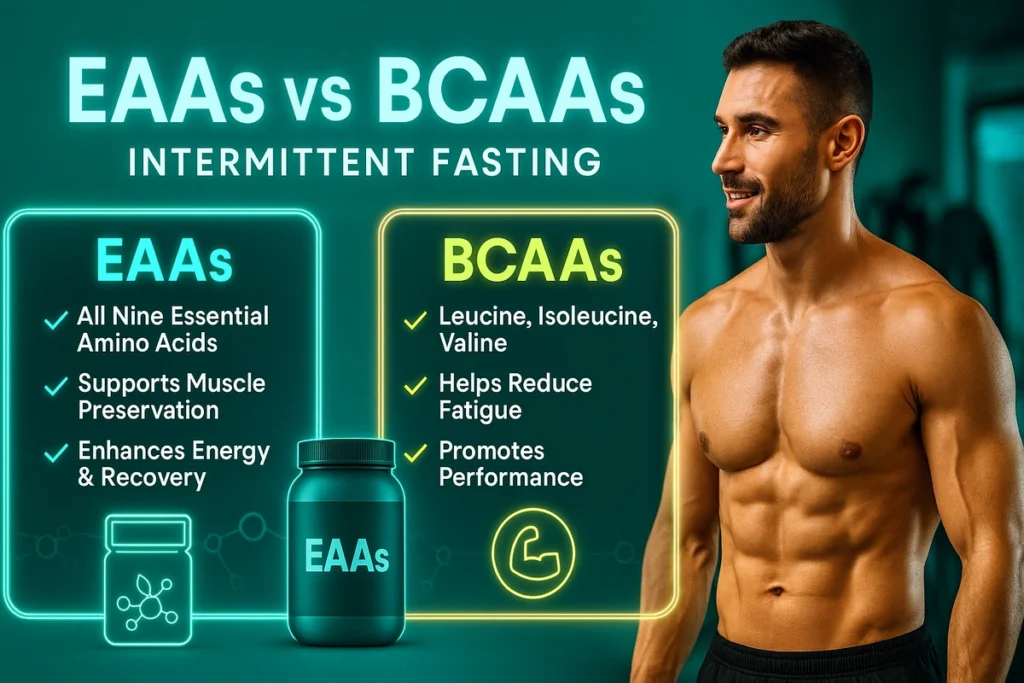
Many people confuse EAAs with BCAAs.
The difference? BCAAs contain just three amino acids (leucine, isoleucine, valine), while EAAs provide all nine.
I’ve personally tested both during fasted training. EAAs consistently outperformed BCAAs—less fatigue, better recovery, and better results.
A client of mine, Daniel, was using BCAAs during his mini-cut but kept feeling drained.
After switching to EAAs, his energy bounced back, and his strength didn’t dip.
For more insights on this topic, check out:
EAAs vs BCAAs During Workout and
EAAs vs Protein Powder.
Do EAAs Spike Insulin or Affect Autophagy?
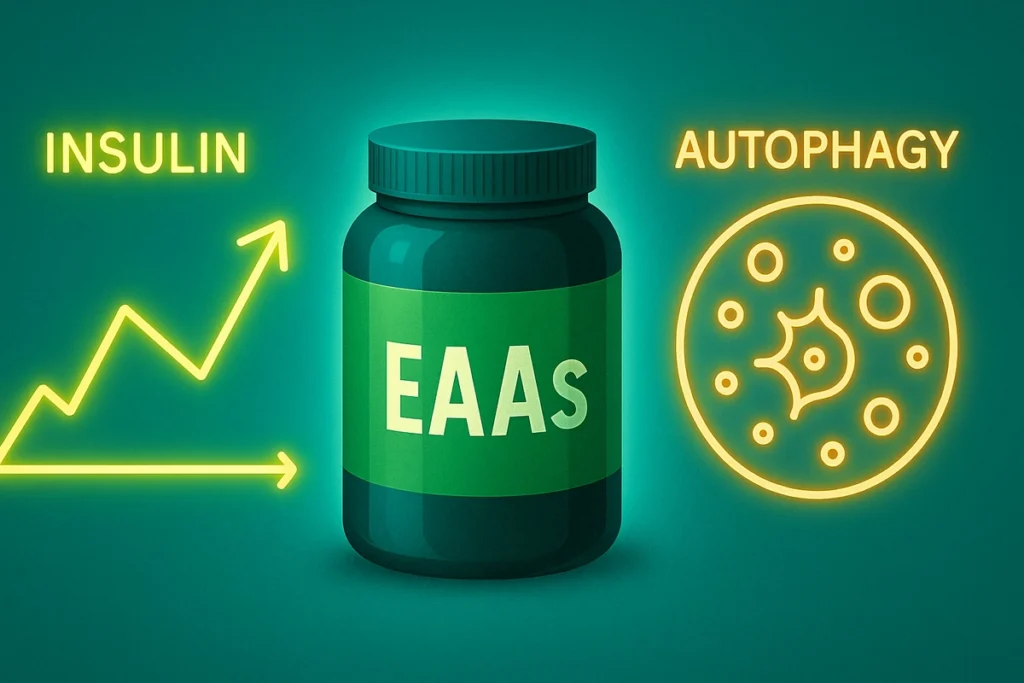
This is one of the most common concerns.
While EAAs may cause a mild insulin response, it’s not enough to kick you out of a fasted state or interfere with fat loss or autophagy in any meaningful way.
In fact, I’ve coached clients through Ramadan (like Luca, who trained early mornings) using EAAs with great results.
They powered through fasted workouts without breaking the fast or losing muscle mass.
To understand how EAAs help with body composition goals, read:
EAAs for Fat Loss and Muscle Retention.
When to Take EAAs During Intermittent Fasting
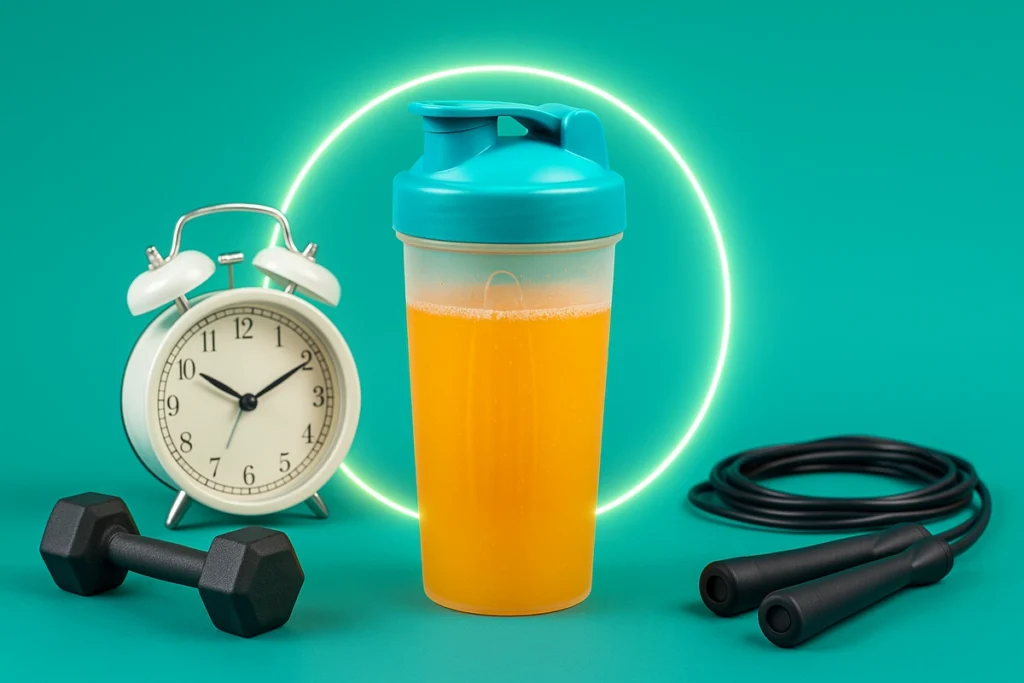
Timing matters.
The best time to take EAAs is before or during your fasted workouts. I usually sip mine 10–15 minutes before lifting.
That’s when you need muscle protection the most.
This was especially helpful for one of my clients, Michelle, who trained fasted during her fat loss phase.
She dropped over 5 kg in 8 weeks and kept her muscle tone, all thanks to solid programming and smart EAA use.
Learn more in this practical guide: Best Time to Take EAAs.
Also, check this in-depth article for active women: EAAs for Women in Strength Training.
Who Should Consider EAAs While Fasting?

If you’re lifting weights or doing intense cardio during your fasting window, EAAs can make a big difference.
I recommend them to:
- Lifters on a cut
- Athletes training early mornings
- People aiming to preserve lean muscle while losing fat
For beginners, EAAs aren’t essential, but they can help if you’re struggling with energy or soreness.
For leaner, more advanced lifters, they can be a game-changer.
Need more context for how to use EAAs during your session?
Here’s a full EAA During Workout Guide.
Conclusion: Are EAAs Worth It for Intermittent Fasting?

If you’re serious about training during your fasted window and want to protect your muscle gains, EAAs are absolutely worth considering.
They’ve helped me stay strong during cuts, and I’ve seen clients thrive with them—even during challenging fasting schedules.
Just make sure to choose a clean formula with minimal additives. Unflavored or naturally sweetened options are your best bet.
In short, EAAs won’t break your fast—but they can break the cycle of muscle loss, fatigue, and poor recovery.



Leave a Reply